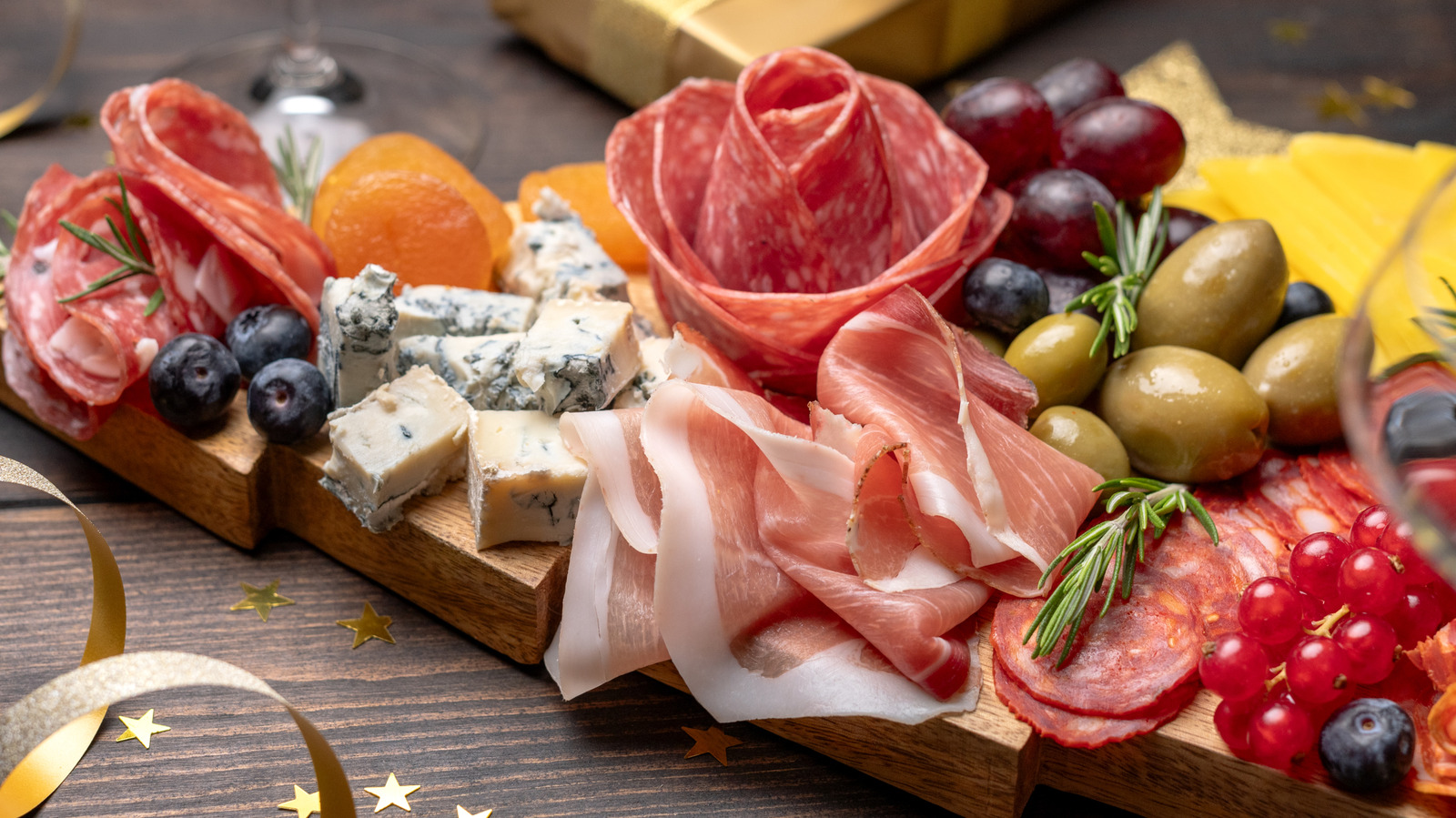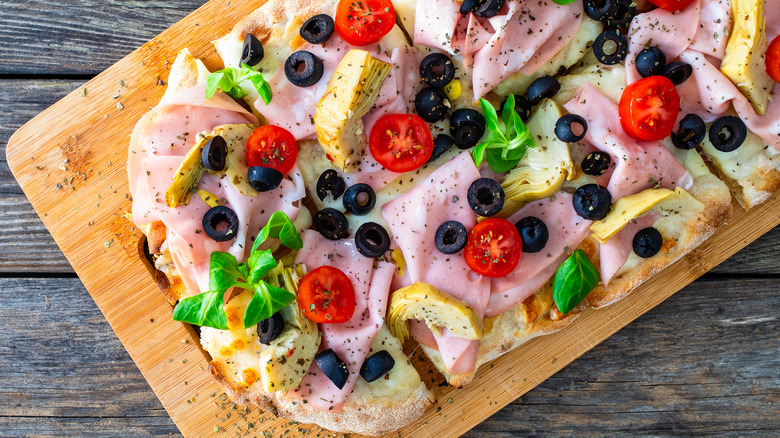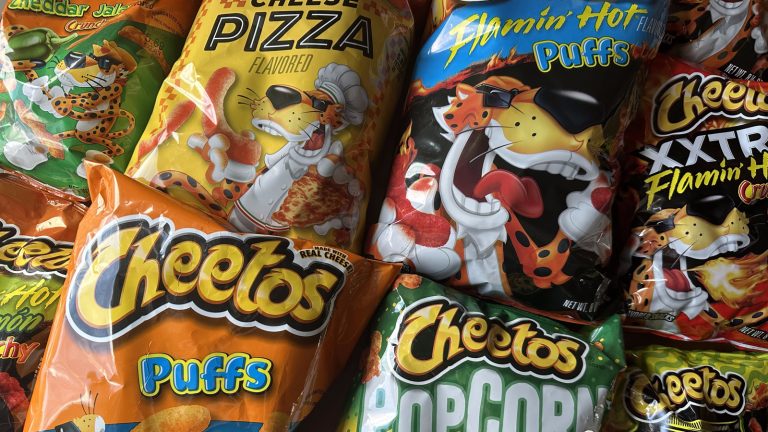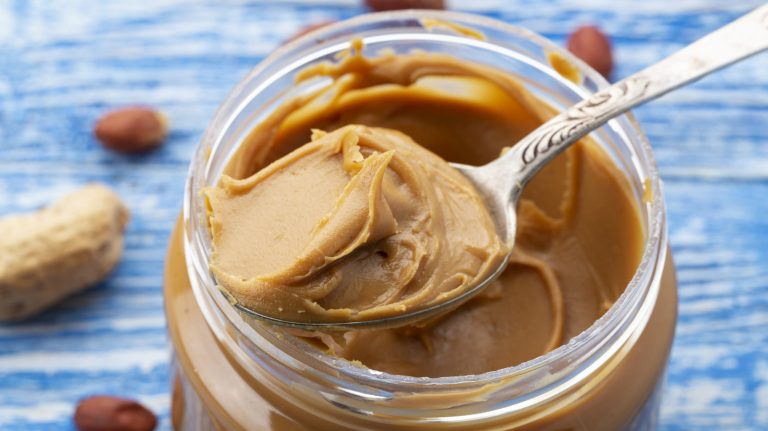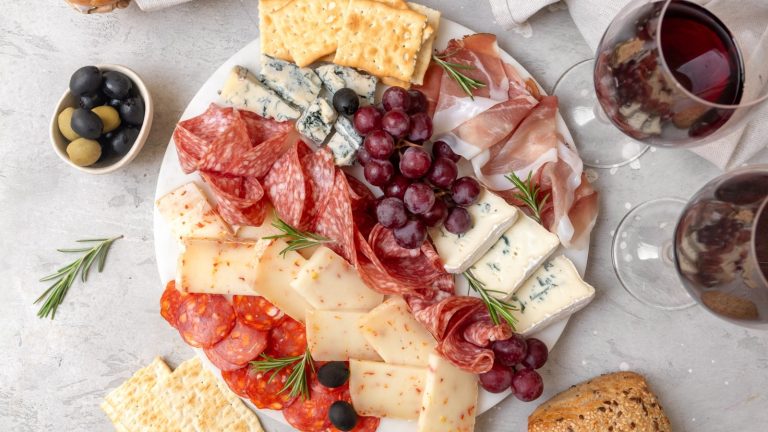Few dishes are as adored as pizza, which is why you can serve up versions of it as an appetizer, main course, or even a dessert. Combine the infinite customizability of pizza with the idea of a charcuterie board, where each bite can be a new combination of flavors, and you have a charcuterie pizza. It is the perfect dish to carry the variety of flavors, textures, and even temperatures that make a charcuterie board so much fun, and can also make boring charcuterie ingredients like mass-produced cheese and simple fruits more interesting.
Start with a pizza base flavored with neutral toppings that complement all your charcuterie elements. These are baked into the crust. Before serving, portion meats, cheeses, pickles, and any other raw ingredients you’d add to your charcuterie board, and top with a drizzle of your favorite dip and chopped nuts — putting together a charcuterie pizza is that simple.
Unlike a conventional pizza, where you’d want a consistent covering of toppings, a charcuterie pizza can be topped more creatively. The idea is for successive bites to taste different. So, for instance, drizzle hot honey on some sections of the pizza and dabs of creamy garlic aioli or dollops of pâté on others. Cutting the charcuterie pizza is also different, since you don’t want individuals pulling out entire slices. Instead, divide the pizza into smaller bite-sized sections so one can pick up pieces from different parts of the pizza to get a variety of flavor combinations. Finally, have side dips and extra servings of garnishes like crushed nuts so that each piece can be topped according to personal preferences.
A charcuterie pizza is arranged slightly differently than a charcuterie board
All the elements on a charcuterie board are essentially separate, allowing eaters to make any combination they wish. However, some ingredients of the charcuterie pizza are baked together with the dough, while others go on as toppings afterward, so it’s important to ensure they all pair well together. Charcuterie specifically refers to meats (typically pork but others as well), and there are also fresh fruits, vegetables, nuts, dips, and preserves to play with. You don’t want them all layered chaotically on a pizza. Instead, take inspiration from the golden rule for filling a charcuterie board, which tells you to start with bread and large pieces of cheese. The pizza base is essentially a substitute for the bread and crackers, so flavor the dough with herbs, garlic, olive oil, or infused butter and layer it with a flavorful melting cheese.
Next, get creative with thinly sliced fruits and meats you want cooked with the base. Pears and apples taste great baked on a pizza, as do salami and prosciutto. Skip the pepperoni since it gets too greasy when baked and will overwhelm other flavors. Wagyu beef belongs on charcuterie boards, so consider adding thin slivers to your pizza. Remember to arrange the toppings so they are pleasing to the eye, as one would expect on a charcuterie board.
Cold charcuterie elements should be layered on your pizza after it is baked. Divide the pie into different sections, each with its own flavor profile, or make separate pizzas for sweet, savory, and dessert charcuterie elements. You can then top with meats, fresh fruit, and nuts, and drizzle the pizza with honey, mustard, jam, or fruit preserves depending on the flavor direction you choose.


